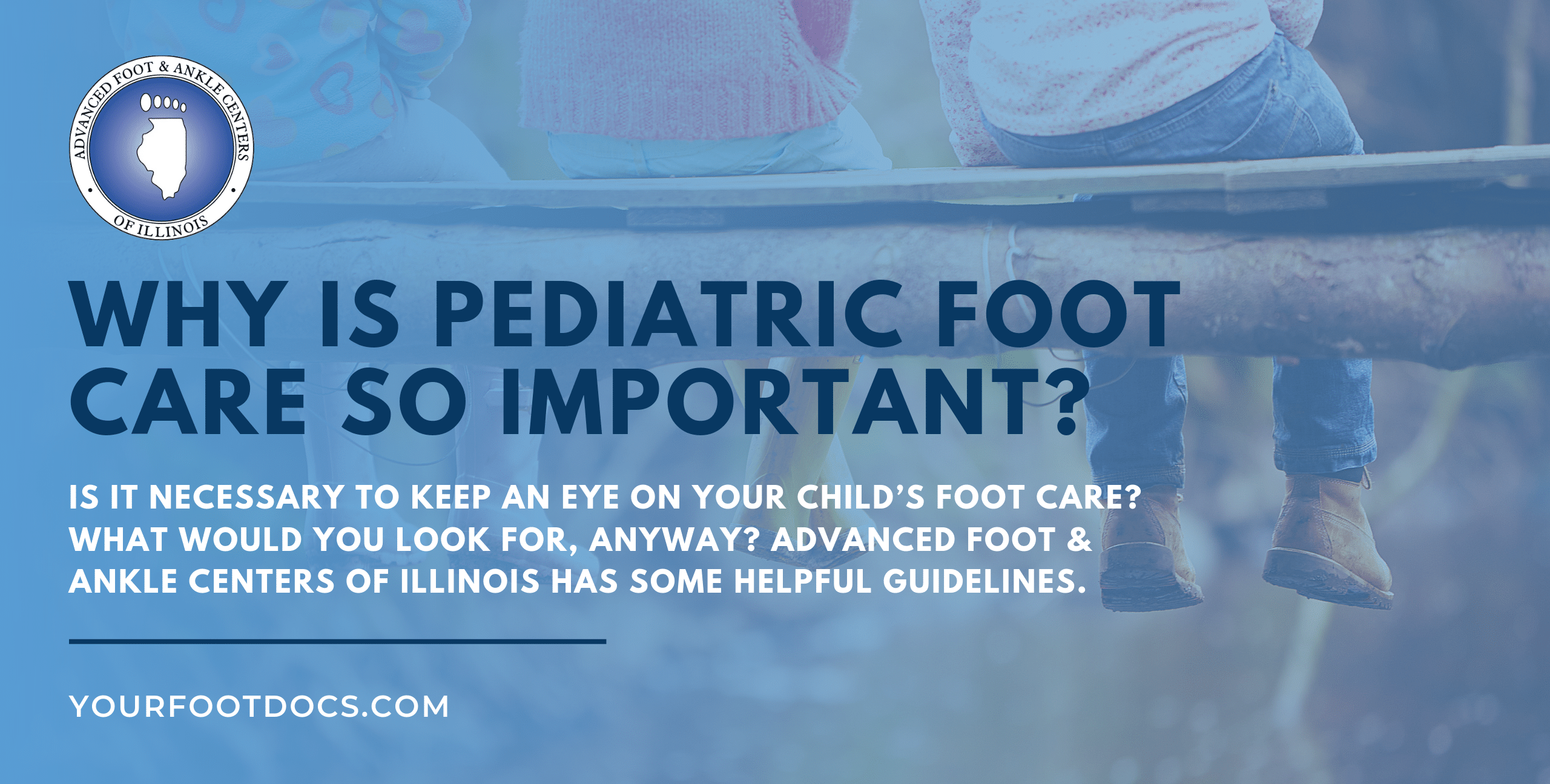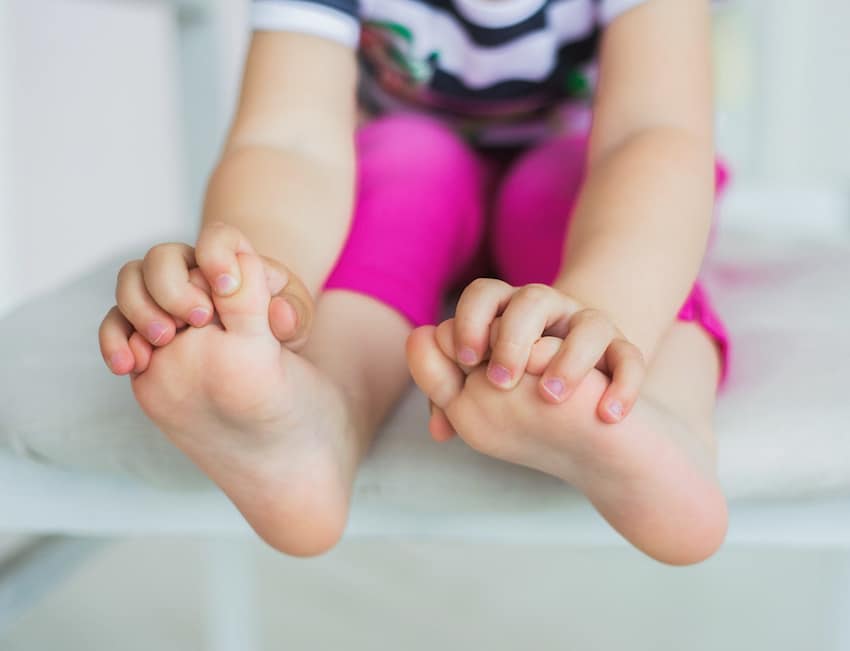Why Is Pediatric Foot Care So Important?
There is no lack of items to be concerned about when you have a child. Are you feeding them properly? Are you cleaning them properly? Are they sleeping well enough? Getting enough exercise? Even when you have a moment of peace, you start to wonder if it’s too quiet.
Foot care may not be at the top of your list of parental worries. They’ve just started using those things, after all. They’re still pretty new!
Honestly, we don’t want you to worry about pediatric foot care, either, and being proactive can bring that peace of mind. Being casually observant at home and keeping on top of things with consistent check-ups can go a very long way toward preventing potential reasons for panic.
But why should you want to keep your children’s feet in mind at all? Because—as you may soon or already have found out at the shoe store—those feet are in a time of rapid development.
Keeping Young Feet Up to Speed
Baby feet do not get a lot of action for a while after they are born. Shoes don’t even really need to be considered at all until a child starts to walk; usually somewhere around 12 months of age.
And then, they’re off! Young feet continue to grow and develop at a quick pace (at least as far as humans are concerned) until that growth drops off around maturity. During the early part of this period, your child continues to develop the muscles and motor skills that take them from an uneasy toddle to a comfortable walk.
Meanwhile, your child’s feet are also developing and firming up the structures that keep us upright and stable, such as our arches. Those pudgy little baby feet often don’t come pre-equipped with such features!
During all this time of growth and development, you might see your child engaging in some unusual moving behavior, or you might notice something odd about the shape of their feet. Some examples include:
- Walking with the feet curved inward toward each other (in-toeing) or facing away from each other (out-toeing).
- Spending an unusual amount of time standing and walking on tip-toes.
- Seeing your child’s arches disappear when standing, but reappear when sitting or rising onto their toes.
These are behaviors that are very much worth taking notice of, but not necessarily something to worry about. In a great many cases, these symptoms are just part of learning to walk and gaining the right configurations to do so. Over time, these abnormalities tend to vanish without a trace.
Seeing them, however, should be cause for a quick evaluation. Although in most cases there is no need for any action whatsoever, these behaviors can sometimes be signs of a deeper, underlying problem.
There can also be cases when a child’s arches do not fully develop and reach a “rigid” state, leading to flat feet. This is a common condition and does not always cause any problems, but should be addressed if it is causing pain or other symptoms.
Through periodic check-ups, we can keep steady progress of your child’s structural and motor development. If we see any causes for concern, we can address them early on, minimizing any discomfort or future impact they may have.
Looking Out for Your Kids (When They Might Not Look Out for Themselves)
Pains that can come from flat feet and other structural abnormalities are definitely a thing, as are pains that can come from everyday conditions such as ingrown toenails, sports injuries, and other maladies.
There are even some more age-specific problems to be on the lookout for, such as Sever’s disease. This is a condition in which heel pain develops—usually in active children ages 8-14—as a result of stress to a sensitive growing heel.
Fortunately, many conditions like these do not tend to be difficult to address. A bigger challenge at times can be identifying when something is bothering your child.
A child may choose to hide something that is causing them pain or discomfort for a variety of reasons. They might be afraid of having to go to a doctor in the first place. They might also be afraid of having to temporarily put a hold on their favorite sports or activities, or letting their teammates, coaches, or even you down if they have to miss out.
Such circumstances mean you might sometimes need to be on the watch for signs of potential problems in a child who may be reluctant to tell you of them. These might include:
- Not participating in favorite sports or activities as often as they used to, either finding excuses to not do so or complaining of being tired and wanting to end early.
- Favoring one foot or the other.
- Walking with any noticeable gingerness or limping.
- Trying to hide their feet, always in socks or shoes.
If you see consistent signs like these, it may be an indication that something is wrong. The matter should be brought up with your child to help confirm whether you might need to give us a call and reassure your child that treatment will be best for them and their fun in the long run.
Foot Care for Now and Into the Future
We can realistically expect some kind of foot or ankle problem to befall us at some point in our lives. The same can be said for our children, but taking a small bit of effort to help ensure their podiatric development runs smoothly through childhood can give them a leg up into adulthood.
We have multiple offices throughout the greater Chicago area to serve you and your family’s needs. Give us a call or fill out our online contact form to get in touch.


